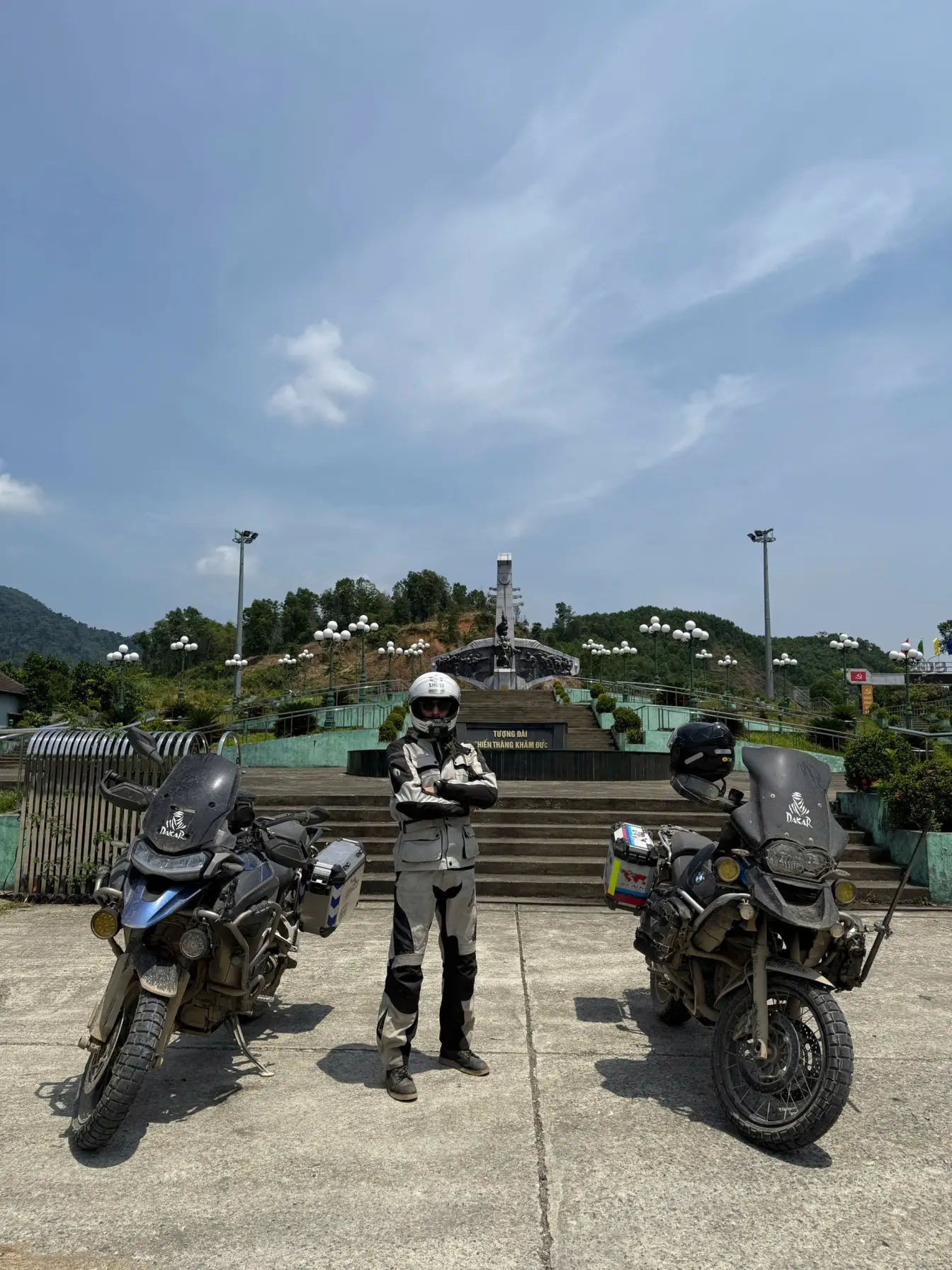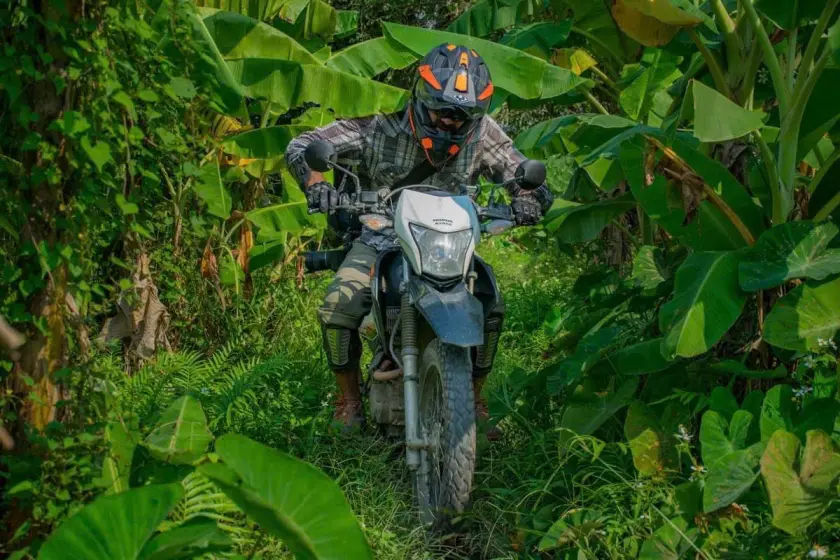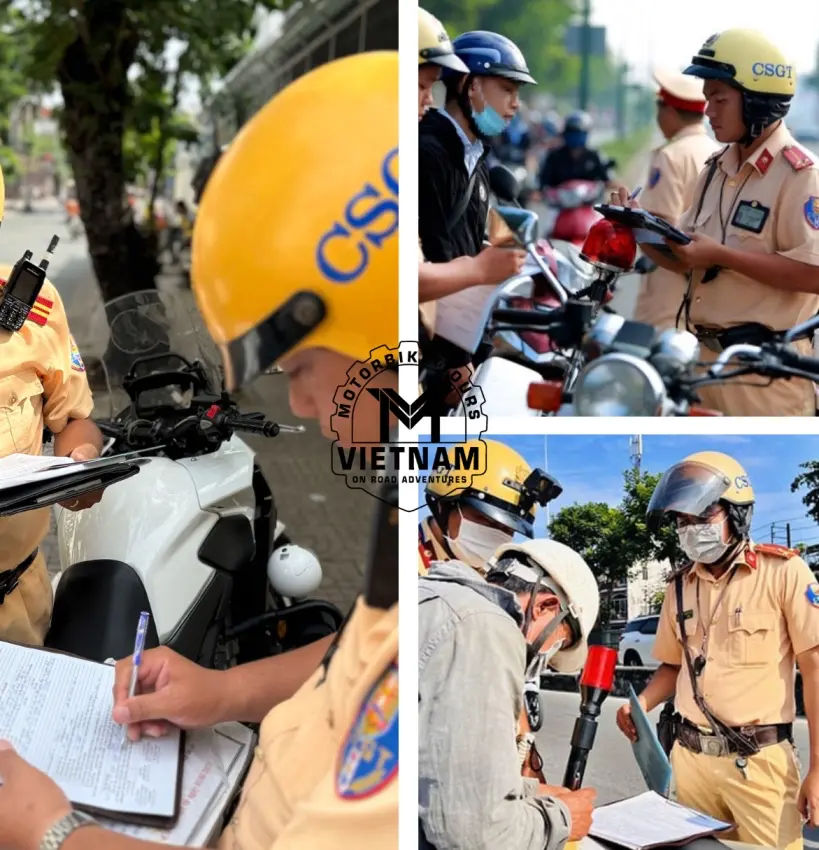
This page is about How to Get Motorbike Insurance in Vietnam, first of all, for any insurance to be valid, you must be driving legally and have a proper motorcycle license. Do you need insurance for motorcycles in Vietnam? The answer is yes, yes, and yes again. Motorcycle travel insurance is an absolute must when riding in Vietnam, whether you’re a local commuter or a foreign traveler. In Vietnam, you are legally required to have Compulsory Third-Party Liability (CTPL) Insurance, which covers damages or injuries caused to others. To protect yourself even further, you can also purchase voluntary motorbike insurance such as comprehensive coverage that includes damage to your own bike, personal accident benefits, and theft protection. You can buy CTPL insurance online or directly from licensed insurance companies , just make sure to always carry a valid insurance certificate while riding.
- Check out Motorbike touring in Vietnam
Introduction to Motorcycle Insurance in Vietnam
This is exactly te same feeling for every expat or rider, just make myself, when I first navigated the bustling streets of Hanoi on a rented bike, it dawned on me how essential proper protection is and that’s where motorcycle insurance in Vietnam comes in.
Whether you’re weaving through traffic or cruising a rural route, driving legally with a valid license underpins everything. The answer to “Do I need insurance for motorcycles in Vietnam?” is an emphatic yes and yes again, and of course you do need one. Beyond that, buying CTPL insurance is not just a formality: it means you’re covered if you cause damage to others. On top of that, you’ll want to explore voluntary options like comprehensive coverage to protect your own bike, personal injury, and theft.
- Check out how to get an international driving permit for Vietnam
- Traffic law for foreigner riders in Vietnam
The Importance of Having Insurance for Motorbike Riders
Picture yourself in Ho Chi Minh City during rush hour, the roar of engines, the weaving scooters, and one split second of carelessness. Without insurance, you’re gaming with fate. In Vietnam, Compulsory Third-Party Liability (CTPL) insurance covers the damage you cause to others, but not your own injuries or bike. I remember my own ride where I narrowly missed a side-car in traffic that moment made me realize how crucial it is to hold a valid certificate at all times.
Not carrying it can result in fines, and worse — without coverage, you bear full financial risk.
Overview of Vietnam’s Motorbike Culture and Traffic Situation
Riding a motorbike in here isn’t just transport, it’s culture and you’re riding a motorbike in a society that everything is based on a motorbike. At every red light, you’ll see whole families stacked on a scooter, delivery riders weaving through lanes, and the city breathing on two wheels.
Over 63% of traffic accidents in Vietnam involve motorbikes, making insurance more than just a legal box to tick. During one dawn ride in Da Nang, the street was a river of headlights and horns, and I felt both alive and vulnerable. The traffic mindset here is different: rules are flexible, space is fluid, and awareness becomes your best form of protection.
- Check out the scenic routes to ride in Northern Vietnam
Types of Motorcycle Insurance Available in Vietnam
When I arrived in Vietnam and hopped on my first scooter in Saigon, I realised that having insurance isn’t just “good to have”, it’s about choosing the right type of cover.
The motorbike insurance market in Vietnam splits into compulsory and voluntary tiers:
The law is telling you to choose the first, while the second lets you build extra protection. Think of it like a two-layer safety net: one to keep you legal, another to keep you protected. Before you zoom through crowded streets or scenic passes, knowing these options helps you ride smarter.
Compulsory Third-Party Liability Insurance
I’ll be honest: when I first bought the mandatory certificate for my bike in Hanoi, I almost shrugged it off as a formality.
But this cover, known locally as CTPL really is your baseline. It protects other people from the cost of accidents you cause: up to VND 150 million per person for injury or life loss, and VND 50 million for third-party property damage.
It won’t pay for your bike or your hospital bills if you crash. I once got a police stop simply because I didn’t have the certificate in my glove box fine followed. If you ride without it, you’re waving temptation at both traffic police and accident risk.
Voluntary Comprehensive Insurance
On a dusty stretch of the Ho Chi Minh trail I glanced back at my bike and thought: what if? That’s where voluntary comprehensive insurance comes into play.
This optional layer covers damage to your own machine collision, fire, overturning, sometimes even elements and natural disaster depending on the provider.
I found a plan where the premium is about 1 % of my bike’s value. It’s not required by law, but in Vietnam’s uneven traffic and hilly roadcuts, it quickly felt like a no-brainer for peace of mind and real-world protection.
Personal Accident Coverage
Late one evening I braked hard sliding into gravel and thought, if it were worse, I’d be paying hospital bills or unable to work.
That experience brought home the value of personal accident coverage. This route covers your own medical costs, potential disability and even death benefits going beyond what CTPL gives, since that only addresses third-parties. Many voluntary policies bundle personal injury cover so you don’t just buy machine protection, you cover the person too.
If you’re a daily rider or guiding friends across provinces, this slice of insurance might feel like buying your brain some backup code.
Theft and Damage Protection
The image of returning to find my scooter gone or badly damaged in a crowded Hanoi side-street is one more reason I explored theft and damage protection.
In Vietnam, some voluntary policies include theft cover if the bike is forced‐taken, or loss from fire, natural disaster, or hit-and-run damage. The premium can climb, but when your bike is more than a rental and your primary transport, this layer turns from luxury to logic. It means you aren’t just insured for “someone’s making you pay”, but for “what happens to your ride”.
Legal Requirements and Regulations
When I first registered my 1974 CB750 Four in Vietnam back in 2012, I was surprised by how structured the rules were, you can’t simply buy a bike and go. Every motorbike on the road must meet basic legal standards, and that starts with insurance.
Understanding Vietnam’s motorcycle regulations can save you more than just paperwork headaches. From proper licensing to carrying a valid Compulsory Third-Party Liability (CTPL) Insurance certificate, it’s not just bureaucracy it’s your legal safety net. These laws exist to ensure that both locals and foreigners ride responsibly on Vietnam’s chaotic but vibrant streets.
Is Motorcycle Insurance Mandatory in Vietnam
Yes, motorcycle insurance is absolutely mandatory in Vietnam, and not just in theory.
The government requires all motorbike owners to have Compulsory Third-Party Liability Insurance, which covers damages or injuries you might cause to others. When I bought my first used scooter in Hanoi, the seller reminded me that without this small slip of paper, I’d be riding illegally. Even locals sometimes forget to renew it, only to realize later that it’s as important as their driver’s license. It’s a legal must, not a personal choice, for anyone navigating Vietnam’s motorbike culture.
What Happens If You Ride Without Insurance
Many still ride with no insurance, but i once met a traveler in Da Nang who learned the hard way, he got pulled over and had no insurance card to show. The police weren’t sympathetic; his fine was around 2 million (USD80).
In Vietnam, riding without valid insurance isn’t something you can talk your way out of. The rules are clear: no insurance, no ride. Beyond the legal fine, you risk paying out of pocket for any accident, even if it wasn’t entirely your fault. It’s a costly mistake that can ruin an otherwise carefree motorbike adventure.
Fines and Legal Consequences
If you’re caught riding uninsured in Vietnam, expect a fine ranging from a few hundred thousand to over a million dong, depending on the circumstances. It might not sound like much, but the inconvenience dealing with police, potential impoundment, or paying accident damages can spiral quickly.
I once stood beside a local who was fined for an expired policy; his frustration wasn’t the money, but the wasted time. The law requires every rider to carry proof of insurance at all times, and in practice, officers do check, especially in city centers and during traffic stops.
How to Buy Motorcycle Insurance in Vietnam
Buying motorcycle insurance in Vietnam can feel like a mini adventure in itself. When I first tried to navigate the streets of Ho Chi Minh City to get my policy, I realized it’s not just about paperwork it’s about understanding your coverage, comparing prices, and making sure you’re legally protected.
From online platforms to local insurance offices, the process is surprisingly accessible once you know where to start. Ensuring you have proper documentation, a valid license, and a clear idea of what you want in coverage makes the process smooth and stress-free, even for newcomers.
Where to Purchase Insurance Policies
Insurance in Vietnam can be purchased in multiple ways. You can visit local insurance offices, purchase through your motorbike dealership when buying a bike, or get one through ant petrol station (yes, sounds very weird).
When I first arrived in Hanoi, I opted for an online policy it was fast, and I received the digital certificate immediately. Local offices also allow you to speak directly with agents who can answer questions about coverage. No matter your method, the key is choosing a legitimate provider, as only authorized policies are legally recognized on Vietnamese roads.
Documents Needed for Registration
When registering your insurance, typically, you need a valid motorcycle license, proof of bike ownership (the blue card, it’s yellow card these days), and an ID or passport if you’re a foreigner. However, in 80% of the times, the motorbike ownership card, the blue card is enough.
I remember fumbling with my passport translation in Hanoi, wishing I’d checked ahead. Some providers also ask for your vehicle registration or prior insurance if you’re renewing. Preparing these documents in advance not only saves time but ensures a smooth process at offices or online platforms. It’s a simple step that prevents long waits and frustration during registration.
How to Choose a Reliable Insurance Provider
Choosing a reliable insurance provider in Vietnam is more than comparing prices; it’s about trust and peace of mind.
From my experience, local reputation, online reviews, and recommendations from fellow riders matter most. I once picked a cheap policy without checking the provider and ran into delays when filing a claim lesson learned. Established companies with clear claim procedures, responsive customer service, and valid licenses are worth the slightly higher premium. Knowing you can count on your insurer lets you focus on riding safely and enjoying the roads, without worrying about unexpected hassles.
Understanding Insurance Costs and Coverage
You will be surprised by how affordable motorcycle insurance are in here and how different each policy could be.
Understanding the costs and what’s actually covered is key before committing to any plan. Insurance prices vary depending on your bike, location, and type of coverage you choose.
Whether you’re zipping through Saigon traffic or cruising along Ha Giang’s mountain roads, knowing your insurance details helps you ride with confidence. A few thousand dong today can save you millions later if something unexpected happens on Vietnam’s unpredictable roads.
Average Cost of Motorcycle Insurance
The average cost of motorcycle insurance depends on the coverage you select. Basic compulsory insurance can cost as little as 60,000 to 80,000 VND per year roughly the price of a street-side coffee habit. However, if you add voluntary coverage like theft or accident protection, expect to pay more, usually around 1–2% of your bike’s value annually.
When I insured my mid-range scooter, the total cost was under 500,000 VND. It’s a small price for peace of mind when sharing the road with millions of other riders daily.
Factors That Affect Premiums
When I asked my insurer why my premium changed from one year to the next, I learned it wasn’t random. Factors like your motorbike’s model, engine size, age, and even where you live can affect what you pay. Bigger bikes or newer models tend to cost more to insure.
If you’ve had previous claims or traffic violations, your premium may also rise. Even the region matters Ho Chi Minh City’s dense traffic often means slightly higher rates than smaller towns. Knowing these details can help you compare options and avoid overpaying for your policy.
What Is and Isn’t Covered
Not all insurance policies are created equal, and I found that out the first time I filed a claim.
Most basic CTPL insurance only covers damage you cause to others not yourself or your bike. Voluntary plans, however, can include your medical bills, theft, and even fire damage.
Still, some situations, like drunk driving or unauthorized riders, will void your policy. I once met a traveler who thought everything was covered until his claim was denied for lack of paperwork. Reading the fine print really matters when choosing what fits your riding style.
Claiming Motorcycle Insurance in Vietnam
Filing a claim in Vietnam might sound daunting, but once you know the steps, it’s a fairly simple process.
After a small accident in Hanoi, I learned that speed and documentation make all the difference. You’ll need to collect evidence, report the incident, and submit your claim to the insurer quickly.
Vietnamese insurance companies typically require photos, police reports, and your certificate details. It might feel bureaucratic at first, but once you understand the flow, it’s quite manageable especially if you stay calm and organized when things go wrong on the road.
Step-by-Step Process for Filing a Claim
After an accident, the first thing to do is stay calm and ensure everyone’s safe. Then, take clear photos of the scene, the damage, and any third-party vehicles involved. Next, contact the local police to create an official report it’s essential for insurance claims.
Once you have all the paperwork, notify your insurance provider within the deadline stated on your policy, usually within 24 to 48 hours. I learned that keeping digital copies of everything helps speed up approval. The process may take a few days, but clear communication always helps.
Common Reasons for Claim Rejection
When chatting with other riders, I heard plenty of stories about rejected claims and the reasons are usually simple but frustrating.
Missing documents, filing late, or violating traffic laws like riding without a license can all void your insurance. One friend’s claim was denied because he’d lent his bike to someone not listed on the policy. Another had issues because of alcohol in his system.
I once nearly missed a deadline myself. These experiences taught me that even small mistakes can cost you big, so always follow your insurer’s requirements carefully.
Tips to Ensure a Smooth Claim Process
I’ve learned that being proactive is the best way to ensure a smooth claim process. Keep a copy of your insurance certificate on your phone, and store your insurer’s hotline number in your contacts.
Take photos immediately after any incident, even minor ones. Always file your claim promptly delays can raise red flags. Most importantly, stay polite and patient when dealing with local authorities or adjusters. I once spent an afternoon waiting at a police office in Da Nang, but being cooperative made the experience easier and my claim was approved faster.
Insurance for Foreigners and Expats in Vietnam
As an expat riding daily in Vietnam, I quickly realized that insurance isn’t optional, it’s a necessity. The good news is that foreigners can absolutely get covered, whether they own a bike or rent one.
The process is similar to that for locals, but with a few extra documents like your passport and valid international or Vietnamese license. Many expats living long-term choose comprehensive plans for better protection. It’s one of those things that seems tedious at first but becomes priceless the moment something unexpected happens on the road.
Can Tourists or Expats Get Motorcycle Insurance
Yes, tourists and expats can easily get motorcycle insurance in Vietnam, and it’s simpler than most expect. I remember walking into a small insurance office in Da Nang with my passport and rental contract fifteen minutes later, I had my certificate in hand. Some rental shops even include basic CTPL coverage automatically, though you should always double-check.
If you’re staying longer, buying your own policy provides better security. Whether you’re exploring on a rental scooter or owning your own bike, proper insurance keeps your trip from turning into an expensive mistake.
What to Know About Renting vs Owning a Motorbike
When I first arrived in Hanoi, I rented bikes before deciding to buy my own. Renting is convenient many shops provide basic insurance, and you can walk away after returning the keys.
Owning, however, gives you full control and allows you to choose your own coverage. With ownership comes responsibility: regular renewals, maintenance, and proper registration. I learned that owning a motorbike feels freeing but requires more planning. For long-term expats or digital nomads, getting your own insurance policy ensures better protection and fewer surprises down Vietnam’s winding roads.
Useful Tips for Safe and Insured Riding in Vietnam
Riding in Vietnam is a wild mix of freedom and chaos and staying safe means more than just luck.
Over the years, I’ve learned that good habits matter as much as good insurance. Keeping your documents handy, maintaining your bike, and respecting local traffic culture all make a big difference. You can’t predict every situation, but preparation helps. From rush-hour madness in Saigon to peaceful mountain roads in Ha Giang, these small steps help you ride confidently while staying protected by your insurance policy wherever you go.
Keeping Your Insurance Documents Handy
It may sound simple, but always having your insurance documents with you can save hours of trouble. I once got stopped at a random police checkpoint in Hue and avoided a fine just because I had my insurance card on hand.
A printed copy tucked under your seat and a digital backup on your phone are best. In Vietnam, police often request instant proof during stops, so keeping it accessible matters. Whether you’re a tourist or resident, staying organized with your paperwork keeps your ride smooth and stress-free on Vietnam’s busy roads.
Regular Maintenance and Safety Checks
Before every long ride, I make it a ritual to check my brakes, lights, and tire pressure. It’s saved me more than once, especially on slippery roads after heavy rain. Regular maintenance isn’t just about your bike’s performance it can affect your insurance too. Some insurers might reject claims if they find your bike wasn’t roadworthy at the time of an accident. A quick oil change or brake check costs little compared to the price of an accident. Think of it as giving your motorbike a health check before every adventure.
Knowing Local Traffic Rules
Vietnam’s traffic might seem chaotic at first glance, but there’s a rhythm to the madness once you learn it. Always ride on the right, wear your helmet, and respect pedestrian crossings even if others don’t.
I remember my first few days in Ho Chi Minh City; I was overwhelmed by the swarm of scooters but soon learned that calm and predictability are key. Following local rules not only keeps you safe but also ensures your insurance remains valid. Many policies won’t cover you if you break traffic laws, so riding smart really pays off.
FAQs: Motorcycle Insurance to Ride Legally in Vietnam
Do I need travel insurance if I am on a motorcycle trip in Vietnam?
Yes. You must get your own health and damage insurance. Make sure to mention you’ll be riding a motorcycle, hold a valid home license and 1968 IDP, and read the policy carefully to confirm what’s covered.
What exactly should be the coverage in my insurance policy?
Your insurance policy should clearly cover: motorcycling (with engine size if needed), medical expenses, emergency evacuation and repatriation, accidental death or disability, personal liability, trip cancellation, and lost or stolen belongings.
Are standard travel insurance cover me for a motorcycle tour?
No, usually not covered. You’ll typically need to buy additional coverage for dangerous activities, declare exactly what you’ll do, pay a higher premium, and accept the insurer’s listed exclusions. Read the policy closely so you’re not left uncovered.
Does an IDP affect my insurance coverage?
Yes, you must hold a valid 1968 IDP from a country that signed the 1968 Convention. Fake or non-valid IDPs won’t be accepted and will likely void your coverage.
what happens in the event of theft or loss?
No, you’re usually not covered for this in Vietnam unless your contract clearly states otherwise. Without that agreement, you’ll likely have to pay for the vehicle’s replacement yourself.
Conclusion: Riding Safely and Legally with Motorcycle Insurance in Vietnam
Riding a motorbike in Vietnam is an unforgettable experience, the hum of traffic, the street-side aromas, and the endless scenery stretching from north to south. But behind that sense of freedom lies responsibility.
Having motorcycle insurance isn’t just about obeying the law; it’s about protecting yourself, others, and your journey. Whether you’re a traveler cruising through rice fields or an expat commuting daily, riding safely and legally starts with the right coverage. Keep your documents close, respect the road, and remember true adventure feels best when you know you’re fully insured and ready for anything.
About the author
Hamid is an expat rider living in Vietnam with years of experience navigating the country’s busy streets and learning the ins and outs of local insurance requirements. Passionate about safe travel and motorbike culture, he shares real-world insights to help fellow riders stay protected and confident on every journey.












